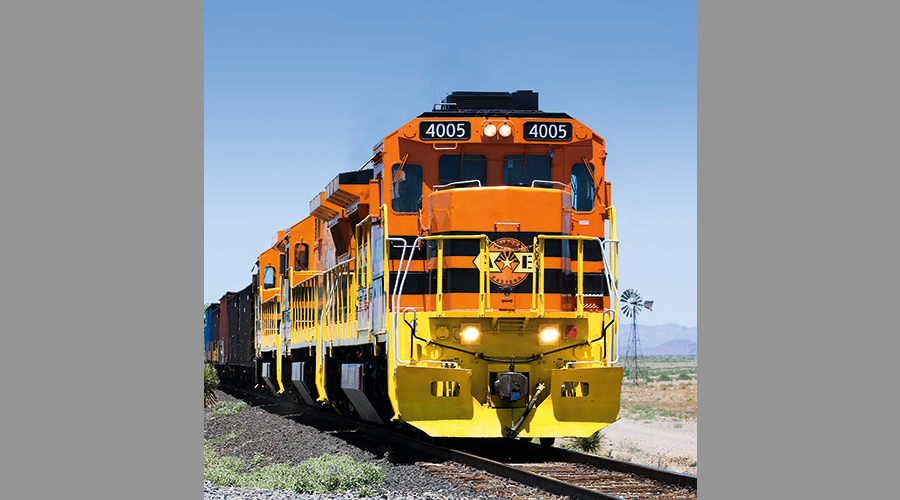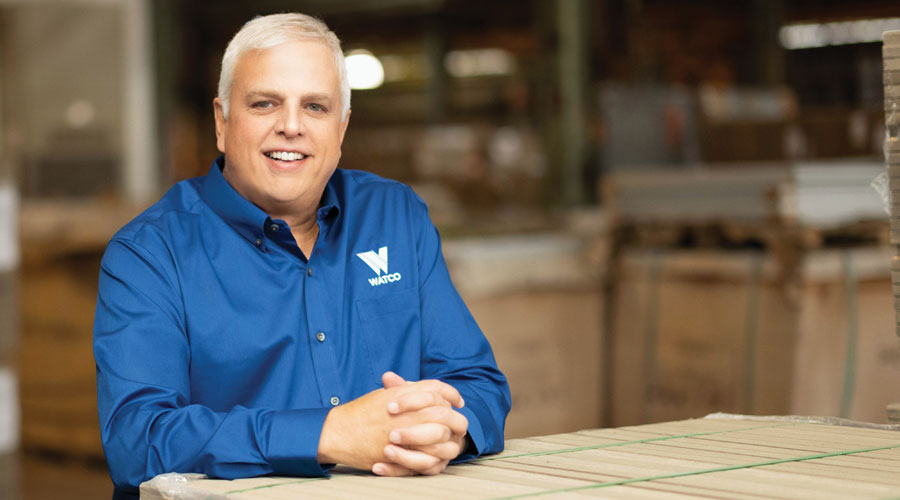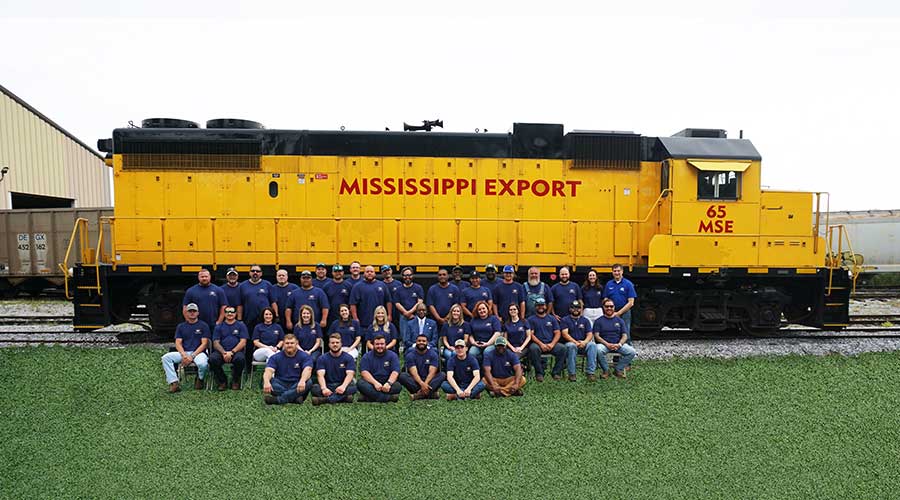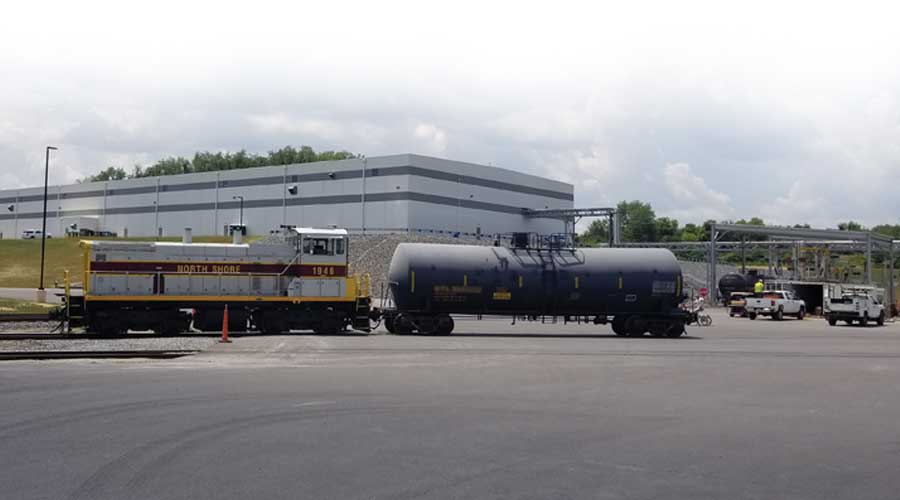Stay updated on news, articles and information for the rail industry
May 2010
Rail News: Short Lines & Regionals
CG Railway aims to take its NAFTA-trade-driven rail ferry service to the next level
By Katie Berk, Assistant Editor
In the late 1990s, International Shipholding Corp. (ISC) officials had no model to follow as they began to develop what they believed would be the only rail-ferry service operating between the United States and Mexico. So, they charted their own course.
"When you're presenting something new and unique, you create your own standard and perception out there," says Kevin Wild, senior vice president of CG Railway, a Mobile, Ala.-based short-line subsidiary of ISC that serves as a connection between railways in southern Mexico, and railroads in the United States and Canada.
ISC and its subsidiaries long had provided waterborne cargo transportation services, hauling a variety of cargo, including cars and trucks, but this was the company's first foray into transporting rail cars.
The idea for CG Railway first came about in 1999 when ISC was aiming to capitalize on the NAFTA trade boom and ISC officials couldn't help noticing freight congestion at all of Mexico's land borders. Customs often was the culprit.
ISC planners were aware of other railroads that operated barge services, but none between the United States and Mexico. During the next couple of years, they prepared two of their barges to handle rail cars and courted potential customers. CG Railway launched operations in January 2001.
"I think the advantage we had was that we had the assets," says Wild, adding that the two barges CG Railway now uses for its rail ferry service originally were part of ISC's fleet in Southeast Asia.
Time, or timing, also seemed to be on CG Railway's side. ISC launched the short line right on the heels of the move to privatize Mexico's national railroad, a process that began in 1995. In the post-privatization landscape, CG Railway found itself with multiple potential partners: three large freight railroads and several short lines. Nevertheless, shippers didn't flock to the new rail-ferry service during the first few years.
"We had to prove ourselves those first three years — that we were reliable. They then rewarded us with more of their volumes," says Wild, who did not provide actual volume totals.
Moving Up and Out
The traffic increases prompted CG Railway planners to start thinking about expansion. At launch, the company's two barges featured single, 56-car decks. As CG Railway execs began to consider plans for adding second decks to each barge, the Port of Mobile, Ala., was starting work on a new container facility — right in the middle of the Mobile port CG Railway operated from. Then, fate intervened. The state of Louisiana encouraged the short line to relocate to New Orleans, offering up $15 million to fund infrastructure improvements to accommodate CG Railway's facility. The short line accepted the invitation and moved to the Port of New Orleans in June 2005 — just in time for fate to intervene once again. Hurricane Katrina hit the Gulf Coast that August. The rail-ferry service was out of commission until November of that year.
After the storm, the federal government could not commit to maintaining the Mississippi River Gulf Outlet. The channel was largely to blame for the storm surge that caused much of the damage to New Orleans during Hurricane Katrina, according to a report from the U.S. Army Corp of Engineers. In 2006, the Corp began a study to determine if the channel should remain open. Ultimately, in 2008 the study concluded that the channel should be closed and a stone barrier was constructed to block the waterway. But CG Railway couldn't wait for the study results; company officials decided they couldn't continue operating in New Orleans without that commitment, Wild says. They then elected to delay the completion of the barges until June 2007 and move back to the Port of Mobile.
Since the move and subsequent completion of the expansion project, shippers send their goods, including forest products, metals, beer, chemicals and paper — about all CG Railway doesn't move are intermodal containers and finished automobiles, Wild says — via five railroads CG Railway connects with: Norfolk Southern Railway, CSX Transportation, CN, BNSF Railway Co. and Alabama & Gulf Coast Railway. The railroads deliver directly to CG Railway at the Port of Mobile, where the cars are loaded onto one of the short line's two barges, which each have a capacity of 115 "standard" rail cars.
The barges sail every four days and the rail cars connect directly with Ferrosur S.A. de C.V. in Coatzacoalcos, Veracruz, Mexico. Likewise, companies aiming to ship goods from Mexico to the United States can ship via Ferrosur, with rail cars arriving at the port in Coatzacoalcos and ultimately connect with one of the railroads in Mobile.
Customer Satisfaction
That's what long-time customer Innophos Corp. does. A Cranbury, N.J.-based phosphate company, Innophos has been a CG Railway customer since the latter's launch.
Innophos' plant in Mexico is about three miles from the port.
"For us, it's a great fit," says Innophos Director of Logistics John Honsinger. "We're located so close to them, our cars come out of the plant, and that same day they're at the port. They're in the U.S. in three-and-a-half-days."
Innophos saves 10 days on transit time vs. using the traditional land border route, Honsinger estimates. The benefits don't stop there. By using CG Railway, Innophos also can clear all the cars in the shipment through customs on one bill of lading, instead of individually, saving money on border crossing fees, Honsinger says.
No matter how satisfied customers are, few companies are immune when the economy sinks, and after surviving Hurricane Katrina, CG Railway in 2009 had to weather a different sort of storm.
"In 2009, we were no different than anyone else in terms of being impacted by the economic slowdown," says Wild, adding that 2009 volume was down 20 percent to 25 percent compared with 2008's total.
But CG Railway officials are optimistic about 2010's prospects.
"We're seeing a slight pick-up now but it's going to take a while to get back to the 2008 levels," Wild says, adding that a stable, loyal customer base will help, post-recovery. "One thing we kind of pride ourselves on is the retaining of customers since the beginning. Those that continue to have the market and volume, we are participating at the same levels we always have, or increased levels."
What's next for CG Railway? Cross-dock and trans-rail facilities to serve potential customers that may not have direct rail access have been in development for the past 18 months, Wild says. Shippers will be able to truck their goods to the Port of Mobile, transload them into box cars and load them onto the ferry. The result: additional volume from existing customers, as well as new ones.
"We're obviously confident in NAFTA trade," Wild says. "We're anticipating continuous growth."


 2025 MOW Spending Report: Passenger-rail programs
2025 MOW Spending Report: Passenger-rail programs
 Gardner steps down as Amtrak CEO
Gardner steps down as Amtrak CEO
 Guest comment: Oliver Wyman’s David Hunt
Guest comment: Oliver Wyman’s David Hunt
 Women of Influence in Rail eBook
Women of Influence in Rail eBook
 railPrime
railPrime








